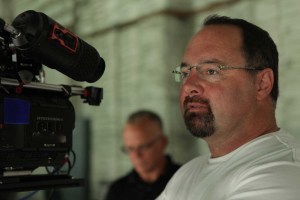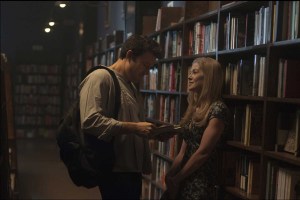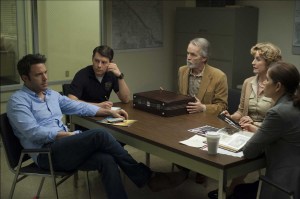
Good things generally happen for Jeff Cronenweth when he teams up with director David Fincher. In their last two feature outings, Social Network and The Girl with the Dragon Tattoo, he wound up with both Oscar and ASC nominations for his work, defining not only emotional landscapes, but literal turf ranging from frenetic days in Harvard Yard to claustrophobically cold nights on the edge of the Arctic Circle.
Now, in the character study-cum-thriller Gone Girl, he helps chart the journey of two narcissistic people, played by Ben Affleck and Rosamund Pike, traveling down non-linear paths. Which might be an understatement. Those particular paths, though, are consistently defined by different textures of light.
Starting in New York, with its steely skyline and cement-bracketed brownstones, the film moves to Missouri, and the fictional town of North Carthage, a place that’s the antithesis of where Pike’s character thought she’d wind up.

It was important, to both director and cinematographer, to let audiences know what the midwest in summer is like, so the lighting and tones were kept warmer and a little more green to capture the humidity and verdancy in their main location, Cape Girardeau, along the banks of the Mississippi.
The filmmakers had looked for locations in Carthage, but when they couldn’t find them, they instead chose Girardeau, a town about two hours south of St. Louis. When they told this to Gillian Flynn, author of both the book and screenplay, she replied, “That’s the city I wrote the book about!”
Director and DP captured St. Girardeau’s tones with a Red Epic Dragon, Fincher being the flipside of the coin from Christopher Nolan when it comes to the film vs. digital question. The RED Epic Dragon captures images at a 6K rate, a big jump from its 4K predecessors.
As Cronenweth recounted, they were then able to down-res the frame to 5K, composing the final 2:40:1 frame within the extra information captured by the camera, able to slide images to the right or left, or closer on the top, or perhaps with more “screen direction,” as he described it, to more fully fix a character’s gaze.
This was important since the movie is filled with psychological chess moves and tension is built not only watching two people spiral out of control, but by imparting a sense of them being increasingly pressured within the frame.
 This led to every shot but one being taken from a fixed vantage – with fluid head mounts and dolly tracks – to further constrain the movement to inside the frame. The lone exception was the hand-held shot that follows a suddenly harassed Affleck who is confronted at a rally to help find his missing wife.
This led to every shot but one being taken from a fixed vantage – with fluid head mounts and dolly tracks – to further constrain the movement to inside the frame. The lone exception was the hand-held shot that follows a suddenly harassed Affleck who is confronted at a rally to help find his missing wife.
Cronenweth talked about how the once-familiar sequence of production is changing too, particularly on his projects with Fincher. “There’s so much happening inter-connectedly,” he said, with rough cuts being assembled while shooting is still progressing, and simple VFX shots being dropped into sequences before production wraps. He sums it up as a “floating liquidity that breaks all the rules.”
But that rule-breaking phases neither DP nor helmer. “We’ve become older, wiser, smarter filmmakers,” he said of the collaboration that began with 1999’s Fight Club.
Before this project, the two were also working on a series of Gap commercials, done in black and white and set in an alternate late ’50s-early ’60s hipster universe where the jazz is always cool and the blue jeans always snug.
Those spots were also done with a Red camera, the Epic Monochrome, specifically tooled with a sensor assigned to black and white.
In the end, it’s always about a quality of light the director is after, and a shot or scene that Fincher suggests, frames or stages, that Cronenweth finds “amazing or clever.”
And whether that’s in a 60-second, grey-scaled spot with sinuous dancing next to a driving range or in a room splayed in vivid colors from a tryst gone horribly wrong, that collaboration to find that elusive light shows no signs of abating.





